The Real Market with Chris Rising – Ep. 78 K. Cyrus Sanandaji
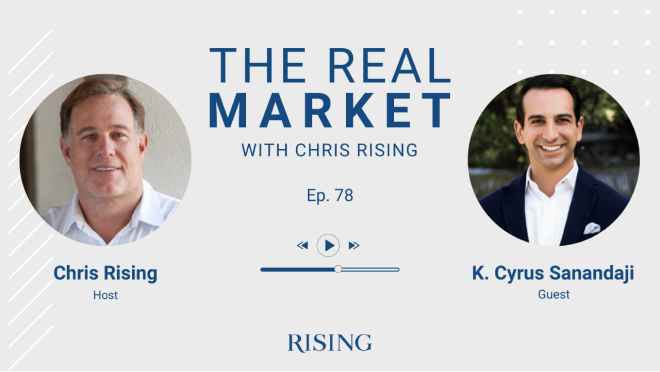
The Real Market with Chris Rising – Ep. 78 K. Cyrus Sanandaji
Podcast: Play in new window | Download
Chris Rising (00:00:02):
Welcome to The Real Market with Chris Rising, the only podcast that brings the real estate conference panel to your headphones. You’ll hear from superstars from every realm of commercial real estate. The biggest brokers, the most well known architects, the largest investors, and the most visionary developers. Learn what they do, how they do it and what drives their success. We’ll discuss the latest trends across regional markets, capital flows, both national and global, and we’ll explore technology’s role in shaping all of them. We’ll take a clear eyed look at where we’ve been, where we are now and what’s to come. Real conversations. Real experts. Real insights. This is The Real Market.
Chris Rising (00:00:50):
Welcome to The Real Market with Chris Rising. I’m excited to have Cyrus Sanandaji with me today. He is the managing director of Presidio Bay Ventures. It’s always nice to have someone who’s a bit younger than me who’s got some great experience and we can talk about what real estate’s going to be in 2022 going forward. Cyrus, welcome to The Real Market.
Cyrus Sanandaji (00:01:11):
Thank you for having me, Chris.
Chris Rising (00:01:14):
Why don’t you tell us just a little bit about Presidio Bay Ventures. I mean, it’s a great name. Anybody who’s familiar with Northern California, even though I happen to be a Southern California guy these days, knows Presidio. Tell us how you started the company, why you chose the name and what you’re working on just basically, and then we’ll go into some detail.
Cyrus Sanandaji (00:01:35):
Sure. Well, the name ties to the genesis of the firm. I was formally in the federal government doing acquisitions and development work, and at some point in 2011, I decided to sort of take the leap and leave the public sector, join the private sector. After going around and having a lot of conversations with a variety of folks, from capital allocators, to managers, to developers, the idea that I had really was to sort of leverage the relationships that I had within the federal government, and the understanding of how the federal government operates as it relates to real estate. Primarily through GSA, but also the variety of other agencies that do a lot of development and leasing work with the private sector.
Cyrus Sanandaji (00:02:31):
Decided to leave, formed Presidio Bay, and was based in San Francisco at the time, still am, and were actually headquartered here as a firm. Wanted to pay a little bit of tribute to the government roots there. Then also obviously the geography so that’s how we came up with the name Presidio Bay and Ventures just ties to the ethos of the firm, which is to constantly sort of push and the boundaries on sort of what’s possible, and to continually try to strive to advance our industry.
Cyrus Sanandaji (00:03:09):
In terms of what we do, we’re focused on three main buckets. The first being corporate development work, in terms of built to suits or renovate to suits, with the federal government being our biggest tenant. We’ve got a series of deals now with them over the last 10 years, spanning eight states and all the way as far out as Guam in the Marianas. From that, we evolved and started doing a lot of spec, sort of private sector development, covering office, R&D, industrial and other sort of special use asset classes. Again, leveraging all of the experience that I’d had doing development work in the federal government, had had exposure to all of those different product types.
Cyrus Sanandaji (00:04:02):
Eventually, we sort of evolved and started the third bucket or focus of the firm, which is high density housing. That dovetailed nicely with sort of 10 years on where we are as a firm and looking at California’s housing crisis. Just actually the United States is housing crisis, but really California taking a very proactive step towards trying to address the shortfall that we have in terms of housing production and trying to promote substantial development and growth through these marina goals up and down the state.
Cyrus Sanandaji (00:04:36):
Finding that even in these jurisdictions that are rather challenging to operate in that we’ve got a great opportunity to pursue and sort of leverage two of the key sort of competencies that the firm has. Which is to develop high density info housing with some form of creative office or lab R&D type product. Obviously life sciences in the last three, four years has been a pretty hot product type. Again, bringing those two together and creating some really special projects and destinations like our Springline project in Menlo Park.
Cyrus Sanandaji (00:05:12):
At a high level, we always had these three buckets. We’re finding that the buckets are starting to merge a little bit more, given sort of the political climate and the environmental climate that we’re in, or economic climate as well, I should say.
Chris Rising (00:05:28):
Well, the first thing I want to break down with you is most people who I’ve had on the podcast, or I’ve known over my 30 year plus years in the business, love to say how they started at Goldman, or they started at… This is all pre Blackstone even. Started at all these wall street firms and that was their relationships, and that got them their first investor and they either built an allocator business or they built a operator business. That’s usually the standard beginning of these things. I think the audience is going to go, “Wait a sec, you worked for the government?” I mean, do a double take on that and go, “I thought the government only knew how to do things over budget and not on time.” You obviously have a great track record of doing things on budget and on time. Tell us how someone who has aspirations to be in real estate decides that working at the GSA is the good career move here.
Cyrus Sanandaji (00:06:21):
Well, so a couple things. I had a background in both real estate and finance and had a little bit of that from my time in undergraduate and prior to going to grad school. I worked for a family office that had a ton of different assets, both in New York and in California, and across a variety of different product types. Was exposed and really realized quickly that it’s one thing to understand the financial side of things and be able to put a model together. The reality is if you don’t understand the product that you’re involved with, that you’re investing in, that you’re trying to garner the trust and build a reputation around sort of that competency and that knowhow, you sort of need to understand how to put that product together. In our case, how to actually build it.
Cyrus Sanandaji (00:07:15):
I had always toyed with the idea of finding my way back into real estate more formally after graduate school, but I’d always had this itch of wanting to serve as well and to work in a very different capacity in the federal government. My entire undergraduate and graduate coursework was in political science, and I thought that I would be taking that path. Until a chance encounter with a gentleman on a plane, actually, flying from San Francisco to Geneva, led to a discussion where I’d sort of shared that. I was at this crossroads in my life. Grad school’s often a sort of pivotal moment for every professional really.
Cyrus Sanandaji (00:08:04):
I told him that I was really torn because I wanted to really double down and dive into real estate as an industry, though I didn’t know exactly how and what I wanted to do, but I knew that I had relationships from childhood in the Middle East. I knew that I had relationships from when I was working through college with this family office, and so knew a handful of brokers regionally and had gotten to meet a decent amount of folks on the investment side, but really didn’t know how to bring all that together. Then on the other hand was torn and really wanted to join the federal government and to really sort of scratch that itch, if you will. He said, “Well, you know, there’s this incredible nexus of government and real estate. As it happens, I am a director in this agency, and this was the longest interview you would’ve ever had. Here’s my business card. If you ever want a job, look me up.”
Cyrus Sanandaji (00:09:08):
I didn’t think much of it. I got back from my trip about two weeks later and I called him and I said, “Were you serious?” He said, “Yep, absolutely. When can you start, and do you have a background clearance? Do you have security clearance?” That started the process. Then nine months later, I sort of stopped my doctorate program. This was right after Obama had gotten elected, so this is through the end of ’08. I moved to San Francisco and said, if I’m going to get this incredible opportunity, someone’s taking this immense risk and sees something in me, believes that there’s this desire to learn, the least I can do is take them up on it.
Cyrus Sanandaji (00:09:53):
Because what think about where we were, the world had just blown up. Getting a job, let alone in real estate, was a pretty farfetched concept. It sort of didn’t matter what the pay was. I mean, it was awful. Like, 50,000 bucks a year or something, and moving to San Francisco in that timeframe. It was decent, but it wasn’t anything that you could really live off of or thrive off of. It was invaluable in the sense that I was given this tremendous opportunity and responsibility to start running teams and start running, both on the ANE and DNC side, but also on the acquisition side, and also lease negotiations, and interacting with property management, facilities management and so on.
Cyrus Sanandaji (00:10:41):
They absolutely followed through on their commitment and said, “Look, we can’t pay you monetarily, but we can pay you in experience and we can pay you in education. And so if you’re willing to take advantage, and if you’re willing to work hard, it’s yours to write your own course.” I did everything from getting a degree in construction management from Cal and gotten a facilities management degree from Penn State. It was just the federal government for that three to four years really was an incredible sort of learning ground for me while I was actually cutting my teeth on the real deal. I would never have it any different way.
Chris Rising (00:11:19):
Well, you got into some specifics, but I do think, because this is kind of outside the box thinking for I think how a lot of people get in into real estate. What would be an example of a tangible project that you worked on during your period there with the federal government, the GSA, that a sophisticated real estate person or someone in the business would kind of understand, but probably doesn’t really know what it means? Do you have an example of anything like that?
Cyrus Sanandaji (00:11:50):
Yeah. I mean, look, and I’ll avoid kind of specifics, but just there’s a particular law enforcement agency, they had a requirement that was delayed substantially. Picture yourself in a tenant occupier type mindset. In this case, there was no federal assets that were available for them to occupy, and so you needed to go out into the market and tour vacant space and meet all the brokers and figure out exactly what spaces can actually meet these requirements. They weren’t vanilla requirements. You sort of had to have a Sally port and a loading dock and so on and so forth. It happened to have to be in downtown Oakland on top of that, so you needed setbacks and there’s all sorts of security considerations.
Cyrus Sanandaji (00:12:40):
Well, we ended up doing a deal with a large institutional landlord after they went through the bidding process. There’s two landlords that were competing for the requirement. The one we ended up doing the deal with had not spent a lot of time doing this type of government leasing work. There’s a lot of complexity to it in terms of the shell requirements that you have to deliver and so on. In terms of my personal experience in going through that, I got to evaluate a market at sort of peak vacancy, right at the trough of a recession. Got to evaluate the physical condition of each of these assets. Got to understand innately kind of what the dynamics were at play in that market. Then have to understand and evaluate the ownership and their wherewithal to be able to actually follow through on those improvements. Liquidity was a massive issue at that point, as you remember.
Chris Rising (00:13:34):
Lived through it.
Cyrus Sanandaji (00:13:35):
Yeah, and these folks had to-
Chris Rising (00:13:39):
Lived through it and worked at a company didn’t have much liquidity.
Cyrus Sanandaji (00:13:40):
Well, and that was some of the challenges. The government was signing leases with folks who couldn’t finance, even with a 20 year lease in hand, couldn’t finance the built to suit because they didn’t have the balance sheet or the wherewithal to put up the guarantees. Even on credit on CTL financing type deals, which is a 105% of your cost financed upfront. You still need a completion guarantee and people weren’t able to do that. I mean, people don’t remember how bad 2009, 2010 was. How bad those years were, excuse me.
Cyrus Sanandaji (00:14:12):
Anyway, so it gave me this great perspective, but I was responsible for taking these projects from soup to nuts. From program requirements and development with the tenants all the way through negotiating that lease, getting that contract signed and then overseeing the design and then eventual construction and then occupancy. It just gave me this exposure, which was tremendous, to all the different facets of what goes into occupying spaces. Now sitting on the landlord and developer side, get the benefit of sort of how these tenants view the space and the market and so on.
Chris Rising (00:14:49):
Given that we have so much cynicism out there about the ability of government to get things done, and especially about, I know from the landlord side, so much pessimism about dealing with GSA and the amount of time it all takes. You’re probably the only person I know who’s been at GSA and made the transition over to the private market and had success doing it. What would you say are the things that government and GSA does well that you learn from, and what you don’t think they did well, and you learned from that allowed you to go out and start your own business?
Cyrus Sanandaji (00:15:24):
I’d say that my experiences are reflective of sort of the moment in time, which was, I mean, essentially the greatest financial crisis since the depression. There was really no one out there with liquidity. The federal government having access to capital was obviously a major driver of being able to be effective at that time. I’ll credit the Obama Administration for passing legislation, or policy I should say, not legislation, at the time that sort of precluded built to suits. They said, “Look, we’ve got a vacancy issue in the office markets. The federal government’s one of the biggest tenants, as well as one of the biggest landlords in the country. Why don’t we use government interest to help bolster the economy and particularly the commercial real estate industry? To the extent that we can, we should bend over backwards and try to accommodate our requirements in privately owned buildings throughout the country.”
Cyrus Sanandaji (00:16:27):
This was an example of a 100,000 foot lease that we signed in downtown Oakland, which was the largest deal that was done in the East Bay that year, and won deal of the year and all that. I mean, it’s indicative of to show you how bad, to at least the listeners, to show them how bad the economy was doing at the time.
Cyrus Sanandaji (00:16:47):
I’ve got to give a lot of credit to the federal government and particularly Obama Administration for that policy. Now, that policy remained for a little bit too long and I think hamstrung the government and created a lot of inefficiencies as it relates to particular requirements. Particularly around these law enforcement and military and intelligence agencies that have very highly secure requirements that you just can’t fit into a vanilla office building, but the intention was right, and certainly one that I think from first hand, in the five, 600 million worth of deals I did in less than four years, meaningfully enhanced the financial position at least of the landlords, we ended up doing deals with. Then similarly of the architects, and engineers, and general contractors, and all the other various consultants that we ended up hiring to build out those spaces.
Cyrus Sanandaji (00:17:41):
I mean, remember, this was the time we had the ARRA, right? The American Reinvestment Recovery Act, that was a jobs program and it was literally looking to stimulate employment. This was just another way of achieving the same thing and advancing that.
Chris Rising (00:17:59):
It’s interesting, because I remember here in Los Angeles there was a project 725 Fig, where trying to remember if it was FBI or Marshall service or secret service.
Cyrus Sanandaji (00:18:10):
Secret service.
Chris Rising (00:18:14):
Secret service took several floors, but then they needed, on the parking garage, the roof, a very secure area for people to park their cars and all of that. I remember the negotiations were quite difficult and all that. I can tell you that from the landlord side, never once did anybody on the team think that the government was doing us a favor by leasing space there, but in the context of what we had to do and all of that, I bet you in a normal market there’s this cost benefit analysis that probably didn’t happen there because there was this kick starting effect. It goes back to a lot of how I feel when I see government do good things, and I’m not talking politicians, I’m talking government, they have terrible PR. They need to get it out there more that this is a good thing.
Cyrus Sanandaji (00:19:05):
I think there’s just a general lack of awareness, unfortunately, at that level of being able to respond to market dynamics. I think if you look back on the last, call it 2013, to about 2020, beginning of 2020, that sort of six, seven year span it was impossible for the federal government to get any leasing done or get any of these private public partnership type deals done because of how inefficient and bureaucratic their process is. That’s the downside. That’s what they don’t do well. This isn’t a political observation. This is just fact, is that when administrations change, regardless of party, there’s an innate inefficiency when you have administrator and secretary level, cabinet level change that happens. Because policies shift, and when policies shift so drastically in they’re politicized, you can’t run the organs of government efficiently.
Cyrus Sanandaji (00:20:13):
We’ve politicized even the USDA. We politicized the EPA. We politicized the BLM for crying out loud. We politicized some very basic, really apolitical entities, organizations, bureaucracies, that shouldn’t have been impacted by sort of the change in the White House or in Congress. There’s sort of, from our personal experience the last five years, we haven’t pursued too many GSA leased opportunities to do built to suits or renovate to suits because a standard procurement that would take nine months or 12 months at most was starting to take two years, sometimes two and a half years. It’s just not worth the cost and the risk of keeping buildings tied up for that long when your opportunity costs to go do a deal in the same space with somebody else, is that much higher. I think that’s to the detriment of the federal government.
Cyrus Sanandaji (00:21:19):
They’re going back into a period in which they have more leverage, just given vacancies in the office market, but it’s not a way to efficiently run, if I’m to sort of sit on the federal government side, it’s not an efficient way to run your procurement and asset management strategy.
Chris Rising (00:21:36):
Yeah, and I think there’s a lack of confidence at times from the landlord side. I know we spent a year on 150,000 square foot immigration court requirement. Got through all the local, everything was approved, including column with distance, everything was there. Oh, don’t worry about it. Just a check when it goes back to Washington, DC. We’re a year into this thing, all the money and all that goes back to Washington, DC. We don’t like the column width, kill the deal. Obviously at a time like this, we’ll probably go through that process again, but it just makes you kind of roll your eyes and go, why would I want to go through this again?
Chris Rising (00:22:17):
I do see, if I’m sitting in your shoes as a bright guy, who’s watched this and seen this in efficiency go, well, maybe there’s an opportunity to go capitalize on that, both for your benefit, but also for the government’s benefit. Just kind of knowing a little bit about your entry into the private sector, there had to have been one deal or something where you said, “Okay, I think I got enough where I can go start a business.” Can you talk about that? What went from, I’m enjoying what I’m doing and I’m getting a lot out of it and I’m giving a lot out that made you say, “You know, it’s time to start Presidio Bay Ventures.”
Cyrus Sanandaji (00:22:56):
It was actually the deal I described in Oakland. It was a number of reasons. I had a long conversation with the principal on the other side of the table. His first question was, “What the hell are you doing in the federal government?” I appreciated it. The flattery was nice, but I asked him, I said, “Look, this is what I want to do. What are your thoughts?” He said, “I don’t think there’s a seat for you at any of these traditional development type firms.” Remember, I was sort of running a built to suit practice, in terms of we had clients and that was really who were internal federal government agencies. It was running this sort of soup to nuts business within the, I call it a business, but as you think about it, in terms of service.
Cyrus Sanandaji (00:23:51):
I ended up actually interviewing with a large REIT that focuses on data centers and they hadn’t previously built. They didn’t have a built to suit business at the time. They’d hired a gentleman who was extremely talented, who was focused on more customer oriented sort of development, and were starting to frame the discussion around sort of built to suit and actually being able to deliver specific product and projects that their existing customers needed.
Cyrus Sanandaji (00:24:31):
Through a couple of introductions and around the golf ended up interviewing and discussing and sort of talking and pitching them on this idea of really formalizing the business, or a division of the business. Had an incredible offer on the table, and I sat back and I had this sort of moment in time where I thought, I could go extremely low risk and ultimately low reward for me. I think people sitting in that position at that time would make different choices based on personal preferences.
Cyrus Sanandaji (00:25:07):
I didn’t have a family at the time. I was single. I thought if there was this moment in time in my life where I have this resume and I have this experience that I want to now leverage for my next step. Some of the frustrations of being within the federal government that you’ve touched on I felt being inside the government too. You’re sort of hamstrung a lot in how you operate, and part of the fun of figuring out how to optimize your process within government fades when you get to do it and you optimize.
Cyrus Sanandaji (00:25:40):
There’s only so much even a deal junkie can pursue because you’re sort of competing with yourself at that point. I remember sitting down and having discussions with a few folks that I think of as mentors and I told them, I said, “Look, it’s this incredible opportunity. It’s a publicly traded multi billion dollar REIT. Great position. I can see myself rising within the organization, et cetera, or I could go do the exact same thing for myself. I just need to go figure out the capital side of it. Am I willing to bet on myself and go do that?” What’s the worst that could happen? I fail. Great. I’ll learn from that. I’ll be able to pick myself up and go figure it out. I don’t have a mortgage to worry about. I don’t have kids to worry about. I don’t have et cetera.
Cyrus Sanandaji (00:26:29):
I decided that despite how great that opportunity was, the bureaucratic nightmare that I had just been through for almost four years was not something that I wanted to get myself enthralled in. The nature of the company really had nothing to do with it. It was just the concept of the company being a larger organization. I realized that I wanted to do my own thing and hang my own shingle, so that’s how the company started.
Chris Rising (00:26:56):
Well, I mean, it’s a great story. My experience is though there’s some something that lights the interest. The opportunity to do a deal. Some great frustration that says, I can’t take it anymore. When you said, “Okay, I’m out of here, I’ve enjoyed my time working with the government and I’m starting Presidio Bay.” What was the kernel? What was the deal? Because I have to imagine it was a deal or something.
Cyrus Sanandaji (00:27:23):
Look, the beauty of the federal government is that everything is scheduled out, so I just looked at the pipeline in our backyard, and I said, “I’m tired of giving deals to the CIMs and the Hinges and the Boston Properties and Beacon. I mean, literally every institutional owner was in my mind was creating tremendous value through these leases. There was no reason I couldn’t just go sit across the table from my former colleagues and negotiate the same for ourselves. I just saw a ton of developers outside of the major cities, small developers who had amassed of phenomenal portfolio and built some real companies just doing this. I candidly knew that I could do the same if not better. At least was willing to bet on that.
Cyrus Sanandaji (00:28:15):
I saw the pipeline and figured that I’d be living on an airplane for a little while, but had all the brokerage relationships, both on a landlord rep and even the tenant rep side. Had all the architectural, engineering, GC relationships throughout California, Nevada, Arizona, Hawaii, which is the area that I covered, and decided to just go for it. Again, the federal government posts these requirements daily online, and so it was just sort of a matter of being able to get out. You start with an internet connection on a laptop. That was the company for a while.
Chris Rising (00:28:52):
Pretty amazing.
Cyrus Sanandaji (00:28:55):
Yeah. Then from there, I think the biggest challenge of building the business was building our capital base. Starting with high net worth that know you and family offices to get to know you through referrals, and you just need to start kind building from there. That’s been the journey for the last 10 years.
Chris Rising (00:29:13):
What was your favorite kind of kickoff deal that made you feel like, okay, I’m less of a internet connection laptop person, and now it’s more of a real company.
Cyrus Sanandaji (00:29:24):
Our 85 Bluxome Street office deal. We had tied up a bunch of different buildings and sites for a specific government requirement. At the time, again, the inventory was abundant with very little sort of tenant demand in the market, so we were able to tie up a bunch of these buildings in San Francisco. After doing the deal and securing the lease, and then buying one of those buildings, I was able to convince our capital partner to at the time, one of our capital partners to actually then take some speculative risk on a adaptive reuse project. One of the other buildings we just ended up moving forward with and renovating on the spec basis, which again, at the time they were solving to like a 10 cap. I mean, this is literally early 2012 underwriting to a 10 cap, which is incredible in today’s world, but there was that.
Cyrus Sanandaji (00:30:23):
Then I ended up being able to partner with a seller who sort of had regrets about selling after we entered into contract. It was a family and they’re incredible. They’re still one of our LTs. Not at all a traditional sort of high net worth family, but this was their singular asset, and it was a phenomenally located site. One day we went out to lunch and said, “Look, if you don’t want to sell, don’t sell, just contribute into the partnership. You’ll be in this thing forever.” Seven years later, we still own the asset. It’s a brand new, newly constructed office deal that we finished. We broke ground in 2014 and finished it in about 13 months. Pre leased it during construction on a 12 year basis. Once it stabilized, we put some really a creative sort of CMBS debt on it, pulled out almost all our cash, and it’s a single tenant deal that we’ve continued to own and operate since.
Cyrus Sanandaji (00:31:26):
I think if we point to a deal, that was really the foundational deal that sort of propelled the company on the path that it is today.
Chris Rising (00:31:37):
Can you tell us who the tenant was who was on the 12 year lease then?
Cyrus Sanandaji (00:31:41):
Yes. It’s Collective Health, who then subleased last year to Aurora. At the time had a great trajectory themselves. NEA was one, and Founders Fund, and a bunch of the other VCs were in there. Got a great credit enhancement out of them. Given it was new construction, they built out the space beautifully. To the point where even in the sublease they ended up putting no money into it. The subtenant moved right in. We anticipate that at the end of that term, in about five years, that there’s really no work that’s going to need to be done to the space and it’s just going to be a really-
Chris Rising (00:32:24):
Well, I have to imagine it hasn’t been lived in for two years, given COVID restrictions up there.
Cyrus Sanandaji (00:32:30):
Exactly.
Chris Rising (00:32:32):
Let’s talk about, you got some exciting projects and I know this audience really loves to hear people passionate about projects they’re working on. Maybe go through and tell us about couple of the projects that Presidio Bay is working on.
Cyrus Sanandaji (00:32:45):
Yeah, there’s a couple of initiatives we’ve been working on kind of within the food groups that we’ve talked about. We’ve put together a pretty phenomenal portfolio of R&D lab or life science buildings. We always talk about them as being R&D and lab, because it’s not just life science, it really ag tech and food tech and robotics. It can accommodate a whole host of different uses, but really these are 50/50 office/lab projects. We’ve got about two and a half million feet in various stages. We’ve got about 150,000 feet under construction right now, another roughly million feet in, well, actually million and a half in entitlements right now. Then we just finished an assemblage recently that is going to go through an area wide specific plan that we then will submit an application for.
Cyrus Sanandaji (00:33:44):
We’re really excited about that. It’s all up and down the peninsula. The idea is to sort of really leverage the ecosystem that exists in that sort of space book ended on one side between San Francisco and then all the way down to Mountain View, and all the markets in between. From Mountain View, Palo Alto, Menlo Park, all the way up to San Carlos and then San Francisco itself. The Mission Bay area.
Cyrus Sanandaji (00:34:10):
We’ve been pursuing that portfolio and sort of growing that since really the first asset we pursued was in 2018. We got into that space well before the 2020 COVID capital influx into the space, and so we’ve been fortunate to really find some great locations. We’ve been able to follow Alexandria into some of their key markets where they’ve really invested and created some incredible clusters. We’ve been able to achieve some serious scale in their vicinity and as a result of their efforts. We’re really excited about all that and continue to be, despite sort of some of the headwinds in the markets around interest rates and so on.
Cyrus Sanandaji (00:35:00):
Sort of separate from that, and I think I touched on this in the beginning, but this whole concept of the regional housing needs assessment that’s going on in California. These RHNA goals really are going to change the face of development over the next 10 years. I think that, I hope that local jurisdictions, and we’re already seeing this in some of what were formerly the more challenging jurisdictions to get entitlements in, are realizing that developers aren’t the enemy anymore. That you can’t just regulate yourself into or out of a housing crisis. You’ve got to actually promote and encourage participation with the private sector and specifically with developers to take speculative risk.
Cyrus Sanandaji (00:35:45):
I really believe we’re seeing a seismic shift in the mentality at jurisdictions, including San Francisco, including places like Palo Alto, like Menlo Park and so on that are becoming much more aware. I would say friendly, but also aware of market dynamics and kind of some of the restrictions that have resulted in no net housing production over the last 10 years. It’s sort of exacerbated the issue that we’re in, the crisis that we’re in from the housing production standpoint, and are now recognizing that, well, with the stick that state’s pointing at them, realizing that they’ve got to work in partnership. It’s exciting because it’s a great opportunity for us to be able to get together and to actually develop some projects and get entitlements for projects that really are going to be, in our mind, the future of office, the future of multifamily and bring them together. Our Springline project is perfect example of that in Menlo Park.
Chris Rising (00:36:53):
I want to talk about the Menlo Park. I also want to just then peel the onion a little bit on what you said, because our experience has been a little bit different. I have yet to see any city, especially some of the cities we do business in, enthusiastically jump into changing their mind on nimbyism and things like that. We still have some very aggressive anti-development groups in cities like Pasadena and others who are gravely concerned that all of their downtowns are going to become like downtown Los Angeles or downtown San Francisco.
Chris Rising (00:37:29):
We have certainly seen the state win in court over and over again. Allowing projects that if the city itself could stop, they would stop. They realize they can’t. We are seeing developers try to meet some of those needs of the no’s that they heard. That brings me back to your project, because I feel like the little I know, I don’t want to act like I know a whole lot about it, is that your project is one that maybe five years ago was dead on arrival, or eight years ago, and now is evolving into something that is more palatable to communities with the state stick behind it saying, “Look, we’re going to have more housing, whether you like it or not.” Am I wrong on that?
Cyrus Sanandaji (00:38:16):
No. I think the motivations are, I think there’s a lot of factors that come into play, and I can speak more generally about sort of the peninsula markets that we’re in, and even San Francisco, candidly. Look, at the end of the day, the stick is a powerful tool. SB35 is an extremely powerful tool because it essentially guts any discretion at the local level. Understanding that developers have that nuclear option encourages and entices the local jurisdictions to come to the table. We’re seeing something else manifest itself, which is a generational shift. A lot of NIMBYs are aging out of these markets, candidly. They’re not living in San Francisco anymore, or downtown. They’re not living in these urban areas, and you’re seeing a younger demographic move in that is much more pragmatic and much more focused on social equity, I think is really one of the drivers there.
Cyrus Sanandaji (00:39:24):
That sort of spawned all these YIMBYs and YIMBY movements to counter the nimbyism. I’m not talking about the housing action coalitions and the BOMAs. I’m not talking about our own real estate funded groups. I’m talking about grassroots organizations that are actually passionate about housing and believe that, not displacement, but just that the growth of these companies that they work for, whether it’s Meta or Alphabet or what have you, Apple, is actually causing an affordability crisis for even some of their own coworkers who may not be earning the same engineering pay that they do. The number of engineers that we’ve spoken to who have formed these grassroots YIMBY pro housing organizations that have actually become extremely vocal and can mobilize voters in cities like Menlo Park or Palo Alto is staggering.
Cyrus Sanandaji (00:40:26):
It’s changed the political dynamic, which is incredible, which means that now they’re electing members to council who share that same perspective. That’s the tide that we’re seeing change. I’m really optimistic. I think the other part of it too, is that if you approach it with a pragmatic lens, which is that unfortunately, housing alone in California doesn’t pencil, let alone housing at the 20% or 30% affordable, 35% affordable rate, without any subsidy or tax credits or otherwise. It’s recognizing that housing production has halted for a variety of reasons, but ultimately culminating in feasibility. How do you make a housing project, or how do you ensure housing units or housing production is increased? You allow the developers to also develop commercial, which is really the valuable stuff.
Cyrus Sanandaji (00:41:19):
When you’re talking about Palo Alto or Menlo Park, or any of these markets, San Francisco, et cetera, maybe not San Francisco today, but up until two years ago. Tying the two together, maybe not directly. In some cases actually explicitly, like our project at Springline in Menlo Park, that is really going to be the future. Transit oriented, mixed use development that has a component of commercial, retail that’s community serving, and really an amenity, and then housing. Bringing those uses all together has proven successful.
Cyrus Sanandaji (00:41:58):
We haven’t had a ton of that type of development in a lot of jurisdiction, and I think we’re starting to see more and more of it. Part of the unknown is sort of conceptually, if you can’t envision what that looks like or what that experience is going to be, the naysayers are just going to double down on the, “Oh, well there’s traffic and there’s this and that.” You let sort of perfection be that the enemy of good and you’re not going to get anything done.
Cyrus Sanandaji (00:42:23):
With Springline as an example, we’ve been able to bring members of various communities and cities to the project and sort of show them what the great sort of positive benefit of having all these uses co-located to create sort of a true destination from both a place making and just a community serving perspective, and how that yields just really positive result beyond just for the development, beyond just for the investors, but really for the community at large. That’s becoming the model that we’re [inaudible 00:43:02]
Chris Rising (00:43:01):
Well, let’s go into a little bit more. We don’t have the advantage of sharing screen at all, but describe the project, the size of the project, the ambitions for the project, some of the issues that you knew going in you were going to have to address and how you address them.
Cyrus Sanandaji (00:43:15):
Sure. It’s a six and a half acre site. It’s comprised of three buildings. There’s 183 apartment units. There’s 200,000 foot office buildings. Then about 35,000 feet of retail. It’s all sitting on top of a podium, there’s two levels of subterranean parking, about 900 stalls. It was originally 1000 stalls when it was entitled. Then when construction started, we modified some of that.
Cyrus Sanandaji (00:43:48):
We stepped in to the project, we essentially came in and took over the project early in the pandemic, sort of 2020. There was absolutely no pre leasing done at all on the office or the retail side, and now we’re heading into a pandemic where the entire sort of existence of office is put into question. Construction’s been stopped due to the shelter in place orders, and so we were stepping into a product designed in the early two thousands with a mid to late ’90s perspective that took so long to get entitled and permitted, and by the time construction started, you’re already building something that’s functionally obsolete from an operational standpoint. Then your entire sort of thesis around who’s going to occupy these spaces is put on its head because you have no idea what the future of office or multi-family looks like, or retail for that matter.
Chris Rising (00:44:58):
That’s right.
Cyrus Sanandaji (00:45:01):
It was a really challenging time to be able to think through sort of some of the dynamics that we were seeing unfold between the sort of migration out of cities like San Francisco, or even downtown LA, and towards some of the more suburban markets. Then understand and see how the tech world was responding, how the professional services world was responding, how the variety of hedge funds and private equity in these seed tenants, which make up a substantial portion of our market here were responding and having a lot of conversations with them.
Cyrus Sanandaji (00:45:39):
Now construction resumes, we’re identifying all sorts of issues with the project. We then are needing to make changes while we’re progressing construction and then essentially reposition the whole asset relative to the market and start attracting tenants. We were relatively successful early on, in November of ’20 we had signed our first tenant and it was a large private equity group. From there, again, that place making strategy started resonating. We started offering and speaking to what a lot of the existing inventory was lacking in light of what the needs of the occupiers were, the end users are, during the pandemic. A ton of outdoor space, a ton of amenities on site. Sitting on top of the Cal train station. A huge area for bikes and dog parks and so on and so forth.
Cyrus Sanandaji (00:46:40):
I think one of the things that we did well, in hindsight, and our thesis sort of played out, thankfully, was we knew that occupiers sort of had this really big question mark around how much space they needed in the future. We sought to space plan it. We were willing to spend a lot of money because to us this was sort of user research. We were getting input directly from these different users. We were entertaining LOIs with tenants we knew we didn’t want in the building necessarily. We had five or six LOIs with law firms going at any given time, and we gave them all 15 cents a foot to test it, because we wanted to see what they were going to come up with. How are you going to be able?
Cyrus Sanandaji (00:47:19):
Then we did the same with a few tech tenants that we thought were a stretch and we kind of encouraged them to do that. We sort of started evaluating and seeing that it was all over the map. There was really no clear answer of how much space they needed, or thought they needed, whether they wanted to go back to kind of the enclosed office versus open office layouts.
Cyrus Sanandaji (00:47:39):
All of the test fits we started gathering, we started refining and we came up with sort of the professional service model, which is more enclosed offices, private offices, and then the creative model. Then we essentially ended up test fitting both buildings in their entirety. Now we had all our marketing materials, but it was informed by all the tenants. What we realized very quickly was that space is a service, and so is retail on top of that. We ended up partnering with this incredible incubator and co-working operator, Canopy. Super high end, high touch, and sort of really matched the branding and the sort of quality level of the project. We did about 25,000 feet with them, 20,000 little, 23,000 feet or so.
Chris Rising (00:48:26):
With them serving more as like a property manager, or they actually lease space from you?
Cyrus Sanandaji (00:48:31):
They leased space. There’s a base rent, but it was really, there was a rev share component to it. We knew that in that market specifically there was a ton of family offices and high net worth that just wanted one or two offices.
Chris Rising (00:48:43):
That’s 25,000 on a 200,000, is that?
Cyrus Sanandaji (00:48:45):
That’s right. It was about 20,000 out of 200,000. We did about 10%.
Chris Rising (00:48:51):
How did the lender feel about that?
Cyrus Sanandaji (00:48:53):
We didn’t have lender. Thankfully, we were all cash on the deal, which allowed us to do some crazy things.
Chris Rising (00:48:59):
Good place to be.
Cyrus Sanandaji (00:49:03):
Yeah. What that did was it allowed us to have conversations with prospective tenants and say, don’t stretch to your outsize range on your square footage. Lock in space that you know will accommodate your needs today, and if you ever worry about not having enough outdoor space or not having enough event space or boardroom space, or all hands space, well we’ve got this incredible space downstairs, and you can just rent that. It’s a la carte. You can accordion up and down. Again, that resonated, and so we’re almost 90%. We’re basically 90% leased at this point in the project. At really phenomenal amounts too.
Chris Rising (00:49:51):
The real question though, as I think we both know, is the 90% makes my heart go pitter patter for you, because that means if you did put debt on, you could cover it or you’re getting the returns for your investors. The Silicon Valley right now has the worst daily occupancy of any market in the country, in the low 30%. I mean, LA we’re in the low forties. Texas, most, most of the Texas cities are all way above 50. What are you saying? Have you delivered a project that is encouraging people to come to an office every day, or is it making you rethink, like, if we’re going to encourage people to get here, we have to deliver, we shouldn’t have done more of this type of space or the other. What’s your real life experience about people coming into the office in the Silicon Valley?
Cyrus Sanandaji (00:50:37):
Look it’s low utilization and the castle numbers don’t lie. All the swipes and the badges, I mean, that’s real data. I’d say a couple things. We’re still early. We just TCO’d the second building and we haven’t even TCO’d the residential yet. That should be imminent any day now. In fact, final inspections are tomorrow. We’re currently building out all of the TIs and the nine restaurants that we’ve signed leases with and signed deals with. They won’t open until the end of Q4, early Q1 of next year. Meaning, so Q1 of ’23 Q4 of this year. We’re going to have to pick this conversation back up a year from now. I can tell you, but I feel really strongly that entire sort of merchandising plan, that retail breakdown that we came up with in terms of the tenant profile, I think is going to encourage a tremendous amount of traffic.
Cyrus Sanandaji (00:51:34):
I think one of our, we’re naturally an office first business ourselves and we’re in the office four days a week. The biggest challenge in downtown San Francisco is that we don’t have as robust an amenity base anymore because a lot of these businesses have had to shutter. That’s the sort of vicious cycle that you look at. When you talk about what’s going to encourage you to actually get back into the office, well, there’s employers telling you got to get back in the office. I think a lot of these tech companies have been a little wishy washy. Like Apple going out and mandating it and then backtracking because 1000 employees sent a little email complaining. I think that a lot of that’s going to change in the coming months as more and more of these firms, they may not lay off, but they’re certainly halting all hiring you’re hearing. I think that’s going to change the mindset of a lot of the sort of entitlement that exists within these organizations.
Cyrus Sanandaji (00:52:32):
Inversely as well, I think we’re getting past some of that fear around COVID and I really do believe that you have to give people a reason, from a destination and placemaking perspective, to show up. If you do, they will. I think the proof is in the fact that, I don’t know where in LA you live, but if you go to Santa Monica or you go to Venice or you go to any of these places, go to Montana Street, those restaurants and bars are packed.
Chris Rising (00:53:03):
Yep. Well, I’ll tell you, I have been up to San Francisco recently, but I usually don’t use a car much up there, but the amount of traffic in Los Angeles that has come back is unbelievable. Yet it’s still not the 500,000 people a day that would come to downtown LA. They’re going places and the restaurants are full, but in this core they’re not. I think there’s basically three reasons. People don’t feel safe, whether that be pandemic or homelessness, to there’s not a sense of a cleanliness. I think that’s changed down here, but when that comes back. I think the third is there hasn’t been the push from employers. What I get frustrated at is that’s a small percentage of the overall population. We’re the most educated and the wimpiest group, these white color office workers. Because every cop’s been coming back, every teacher’s been coming back. At some point, these… Then you’ll start to see it hum.
Chris Rising (00:54:00):
You hit on something I do want to bring up because you’ve got this unique project with nine restaurants coming in. I just was doing an interview today about why some of these national fast food chains are coming back to downtown LA and coming back to some of the major markets. Why you’re seeing Taco Bell Cantina and all that. The bottom line is I don’t think people understand, when we destroyed all these wonderful places to go eat or go get a drink, not intentionally destroyed it, but because COVID did, you’ve just wiped out what people want when they’re working in an office, which is the easiness to go grab something to eat, the easiness to go meet someone for a drink and all that. The suburbs still have all that stuff. I don’t know. That’s my little pontification, even though I’m interviewing you. I just think it’s-
Cyrus Sanandaji (00:54:47):
I agree with you 100%. I think one of the travesties of really the last two years is that it’s exposed really some of the just, I don’t know how to say this politely, but I mean, we have local government from San Francisco down to LA have absolutely destroyed these communities and these sort of incredible places. Not just downtowns. I think we’ve allowed property crime. We’ve allowed sort of a lot of the leniency that we’ve seen, whether it’s Gascón in LA to Chesa Boudin in San Francisco, that has had a major negative impact on quality of life and not just in downtown, but throughout. I hear more stories than I’d like about people being followed, whether you’re in Beverly Hills or in other affluent area in LA, into their houses. Cars getting into their driveways, being held up at gunpoint, being robbed. We have unleashed and used COVID as this excuse to allow law enforcement to sort of take their foot off enforcement.
Cyrus Sanandaji (00:56:07):
The institutions haven’t helped because to a certain degree these DAs in LA and San Francisco encouraged it. I think we need to pull back from that rhetoric of villainizing law enforcement and the concept of laws and needing to enforce them. I’m not talking about the police, but I’m talking about the notion as a society of actually enforcing our laws. Then on the other hand, certainly not abandoning any criminal justice reform efforts. Those two things aren’t mutually exclusive.
Chris Rising (00:56:43):
I agree.
Cyrus Sanandaji (00:56:43):
They need to happen hand in hand. If we can start, it’s a silent majority, which is really the mass sort of middle of the voter block in each of these cities starts regaining, at least in California, regaining seats for more moderate and pragmatic candidates. These crazy progressive sort of policy makers, at varying levels, whether it’s council, whether it’s school boards, whether it’s DAs, they need to be removed and then we can regain California again. I think until that happens, we’re going to be held hostage to the whims of the extremes.
Chris Rising (00:57:24):
Well, and I also I think there’s one other element that we talk about. Maybe it affects us a little bit more down here, because there’s this ongoing threat that they’re going to reimpose mask again down here. Not sure it’s going to happen, but I go, wait a sec. You’re going to tell people that they have to wear a mask when they’re coming into the office. That’s, one, going to drive people out, but yet I walk out my door and there’s someone defecating in the street, which is probably much more dangerous to our health. Nobody does anything about that. This doesn’t make any sense. We’ve got to start making sense.
Chris Rising (00:57:59):
I have a friend in Houston, Koy, anyway, he’s a friend in Houston who’s is a good broker there, and I sent him the castle system thing the other day and I said, what is it? I mean, I was just in Dallas. It’s hotter than heck, it was miserable there. I’ve been just in Austin. It was hotter than heck. I was just in Houston, but you guys, everyone’s going back to the office. I mean, he said, “I don’t know if it’s politics. I don’t know if it’s just cultural. It’s just we like to be around people we work with.”
Chris Rising (00:58:31):
There’s just something missing right now. I just, it’s frustrating, it’s sad, because we’re having price resets that are going to be disastrous when it comes to refinancing buildings. It’s going to ripple through the economy and there doesn’t seem to be the leadership out there. I love the State of California, I’m a Californian through and through, between LA and San Francisco. I still believe in the Republic of California as a driver, as the fifth largest economy, but there is just some basic quality of life issues we got to solve to inspire and to enable people like yourself and myself to go out and risk the money that we’ve risked.
Chris Rising (00:59:08):
I mean, I said on one block here on Spring Street, that pre COVID was coming back. We had a citizen M hotel that got done. I got a Cambria hotel. We did a $60 million office renovation with a great restaurant on top and all that stuff. It gets dark and nobody wants to go outside, they just don’t feel safe. We can’t have that. Wow. I love that we get to talk about this stuff, but I think it all centers back around creating great places.
Chris Rising (00:59:35):
What you are doing, putting a project on a rail, allowing people to get out of their cars day to day, giving them access to the bikes, giving them the restaurants, is something in the long term that’s going to be an amazing project. What about in the short term? As you are looking at what we just described we’re both living through, what are some certain short term challenges you think you got to get over, and what do you think is going to happen? When I come up and see the project, are you going to say, “Well, we did this, this and this in the last six months, and that’s what made it hum.”
Cyrus Sanandaji (01:00:08):
Yeah. We’ve got a few projects that we’re tinkering with right now that are more San Francisco based that, candidly, need those tweaks. Unfortunately, not built yet. Meaning we haven’t started construction yet. Look, I think we’ve dialed in Springline really well. We’re almost fully leased. We’re 100% leased on the retail. We’re already 30% pre leased on the apartments and at incredible rates. I think that got it right in terms of what we’re talking about. There’s not a lot of projects that we have in our portfolio that you can sort of reverse engineer that type of outcome if it doesn’t have those key ingredients.
Cyrus Sanandaji (01:00:57):
One of our things that we’re focusing on, on the go forward, is really to make sure that we have projects at scale that have that mixed use nature. Because no matter what happens, the concept of being able to pull together the ability to live, work and play, and it sounds trite and it’s been overused in our business for a very long time, but when you actually see that come together, it sort of eliminates the notion of I need to go to downtown as a destination to go to my office. There’s 500 people that are going to be living at that same six and a half acre parcel, and there’s another, probably 500 to 1000 people that are going to be frequenting the restaurants seven days a week, hopefully.
Cyrus Sanandaji (01:01:43):
Once you have critical mass, it begets critical mass. I mean, it’s funny, we’ve got a 14 month old at home and they say sleep begets sleep. It’s so true, and same thing, critical mass begets critical mass. You need bodies to encourage others to come out. I’m not that excited about going to a bar downtown for happy hour if I’m going to be the only person there. If I know that there’s going to be 100 people there, I’m going to be excited about going into the office so that I can go and look forward to that.
Cyrus Sanandaji (01:02:16):
The one thing that we have here which downtown LA, and I was born in LA, so I’ve spent a lot of time there and we’ve done some work down there, but the one thing that we do have going for us in San Francisco that we need to leverage more, and I’m now thinking through the lens of our assets in San Francisco, is the proximity to the Giants and to the Warriors stadiums. Those stadiums are within walking distance of each other. They’re sitting on top of the Caltrain at 4th and King. It’s a phenomenal look. Then you’re served by the ferry and so on. That is the central life of San Francisco. We need to encourage that. We need to have more and more people come into town.
Chris Rising (01:02:52):
You may not know this, but I kind of know the guy who developed all of that up there in Mission Bay.
Cyrus Sanandaji (01:02:57):
There you go.
Chris Rising (01:03:00):
I still remember going up there with my father in 1994, when he took over Catellus, and we were walking through. They had the golf range there. I remember walking with my dad in ’94. I’m in law school and I look at him and say, “Dad, if you ever walk here by yourself again, I’m going to get so mad at you.” It was so unsafe. Now you’re right. I mean, the Warriors were the last piece of the puzzle. They tried so hard to deal with the prior ownership and bring them there. It was the new ownership that brought them there.
Chris Rising (01:03:28):
Mission Bay is the example of, and if you say, “Okay, what makes Mission Bay different than say the financial district, or what makes a different than downtown LA?” It’s because exactly what we just, it’s the fact that it’s a big office park called the financial district, or it’s a big office park called downtown LA. You got to integrate the access, the not needing a car. I think both cities have all the infrastructure there, so what’s the missing piece.? It’s you got to feel safe.
Cyrus Sanandaji (01:03:58):
Exactly.
Chris Rising (01:03:58):
You got to feel safe.
Cyrus Sanandaji (01:03:59):
That’s public policy. I think we need to restore that social contract that exists and government needs to play a heavy role in that. We cannot continue to compromise the constituents, the populations’ needs and rights and desire for safety.
Chris Rising (01:04:18):
Well, I’m really excited to, on my next trip I’m going to come and see some of the stuff you’re working on. I mean, this has been in my blood since I was born.
Cyrus Sanandaji (01:04:24):
We should go grab a drink and I’ll take you to a few bars that have more than a few people in them.
Chris Rising (01:04:30):
I love it. Let’s just in with this. The one piece, and we don’t have to do this another time, but I think that I want the audience to know, is you in kind of the early discussions about this podcast you talked a lot about integrating technology into everything that you do and how that piece is really important. Maybe just kind of end with what is it around technology and communication with tenants, communication with customers, communication with people in your projects that you think is really vital to the success? What’s unique, or what would someone see that they might not see if they pull into a Target somewhere?
Cyrus Sanandaji (01:05:09):
I think a couple things. I think it speaks to understanding who your tenants are. If we were in Dallas or Houston, would we deploy the same technology suite? I don’t know if it would necessarily resonate with the same tenant base, just by virtue of the fact that the industries are different. Most investors, most professional service firms, most entrepreneurs are invested in the tech ecosystem, and so again, as a means of ensuring that you are also aligned with their same perspective of being able to push the boundaries on everything that’s possible today and sort of really welcoming tomorrow, you’ve got to implement the same. Really push the boundaries of their user experience in your buildings.
Cyrus Sanandaji (01:06:00):
We use technology to solve a whole host of different goals and issues that we have. An example today is that everyone keeps talking about ESG. Well, it’s become a hot topic because institutional investors and Wall Street have made it a hot topic, but what does that mean for the occupier? What does that mean for sort of that end user? How can you leverage technology to provide transparency and insights into the impact that they’re having and that the building is having on the environment, or their overall health and wellness within the building, for example.
Cyrus Sanandaji (01:06:36):
I mean, part of this discussion around safety, and I’m not talking about physical security, but we’re talking about sort of health risk. Well, in the Springline project, we implemented at a whole host of HVAC upgrades that included MERV filtration, needlepoint ionization and bio wall and so on. I mean, we leveraged a lot of our lab experience to do that.
Cyrus Sanandaji (01:07:02):
Some would say it’s overkill for an office building, but all that’s useless. It’s a few words on a flyer and maybe a broker can recount those three things, but what the hell does that actually mean? Pardon me? What does that actually mean for an employee working at XYZ company that’s a tenant? Well, if we can leverage technology, sensor technology, and then actually have that feed through and go on to the app that we have, that we’ve custom built for the project that every tenant and visitor can can access.
Cyrus Sanandaji (01:07:38):
It’s sort of taking that concept of the water bottle filler and the clicker on it and taking it to the next level. If you can see in real time the indoor air quality level in your space, or you can see how much power you’re utilizing, or you can see how much water you’ve saved, et cetera, you can start influencing behavior and start influencing outcomes positively. That’s just one example of something we’ve really leaned into to really help as it relates to these ESG goals and to demonstrate them to the occupiers.
Chris Rising (01:08:14):
We have done the same thing. For any of the audience who thinks this stuff isn’t real, I point to it over and over again. That when you bring a potential talent in, and you can show that head of HR, that when you have to deal with people’s fears about coming into the office, and you can say, “Look at the air quality.” These are real things. It’s great to hear that. When we were talking about having you on and all, that was one of the things that jumped out to me, is because I don’t know if everybody recognizes what a leasing tool is and what a public safety tool is. It comes together. Cyrus, I think we might go for another hour if we really want to talk about Mission Bay and things like that. I think it’s probably been a really good conversation. I really appreciate you being on The Real Market. I’m looking forward to getting to see you in person when I get up there in the next few months. Thank you so much for being on The Real Market.
Cyrus Sanandaji (01:09:07):
Thank you for having me and look forward to raising a glass together when you’re up here next.
Chris Rising (01:09:12):
Sounds terrific. Thank you.
Speaker 1 (01:09:14):
Please, don’t forget to follow us. We’d really appreciate it if you subscribe to the podcast. You can do that on Apple iTunes or any of the other podcasting services. It’s The Real Market with Chris Rising, and follow us on Twitter @chrisrising or @risingrp. Please follow our blog, chrisrising.com or risingrp.com. Thanks so much.
Speaker 4 (01:09:38):
This episode of The Real Market is brought to you by Rising Investor Platform. The platform provides accredited investors with exclusive real estate investment opportunities on a deal by deal basis, across various asset classes, including office, industrial, hospitality, multi-family and data. The platform also provides an inside look at deals in our pipeline while giving investors the chance to indicate interest before it’s too late. We recently funded our acquisition of 9320 Telstar, a mixed use office industrial property in El Monte, California, using our investor platform. To learn more about how accredited investors can join the Rising Investor Platform, please visit risinginvestorplatform.com.

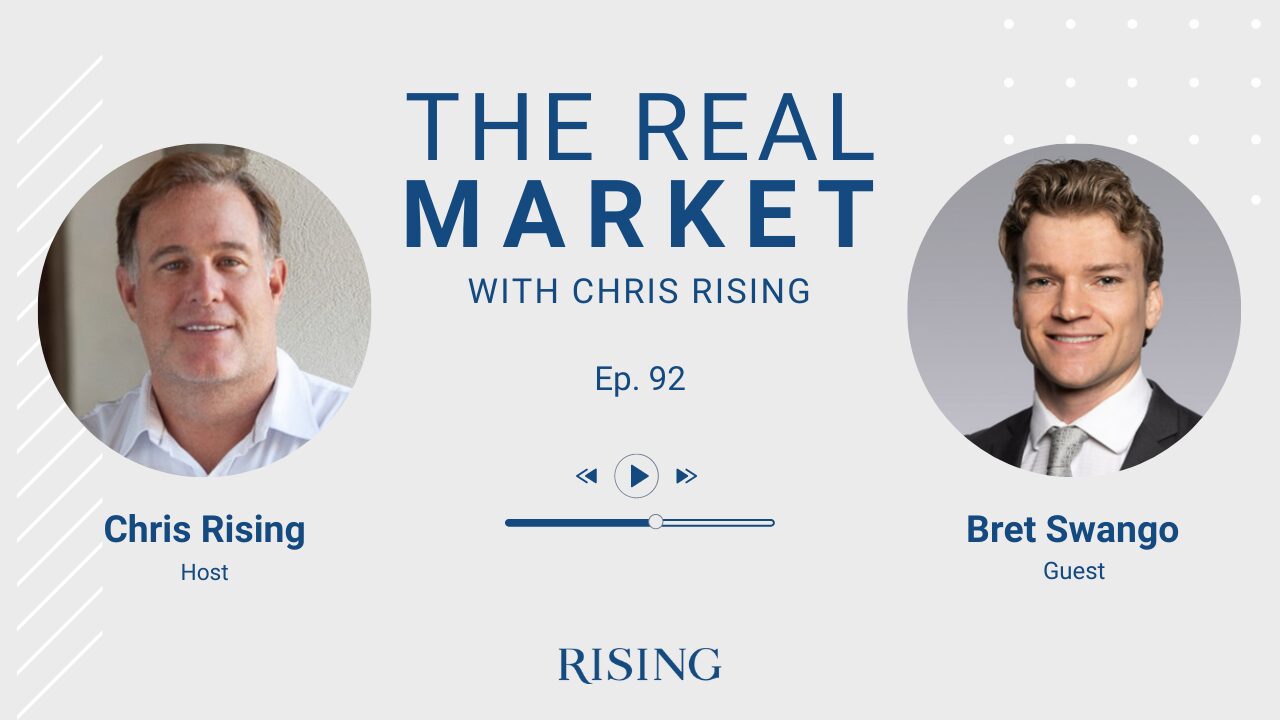
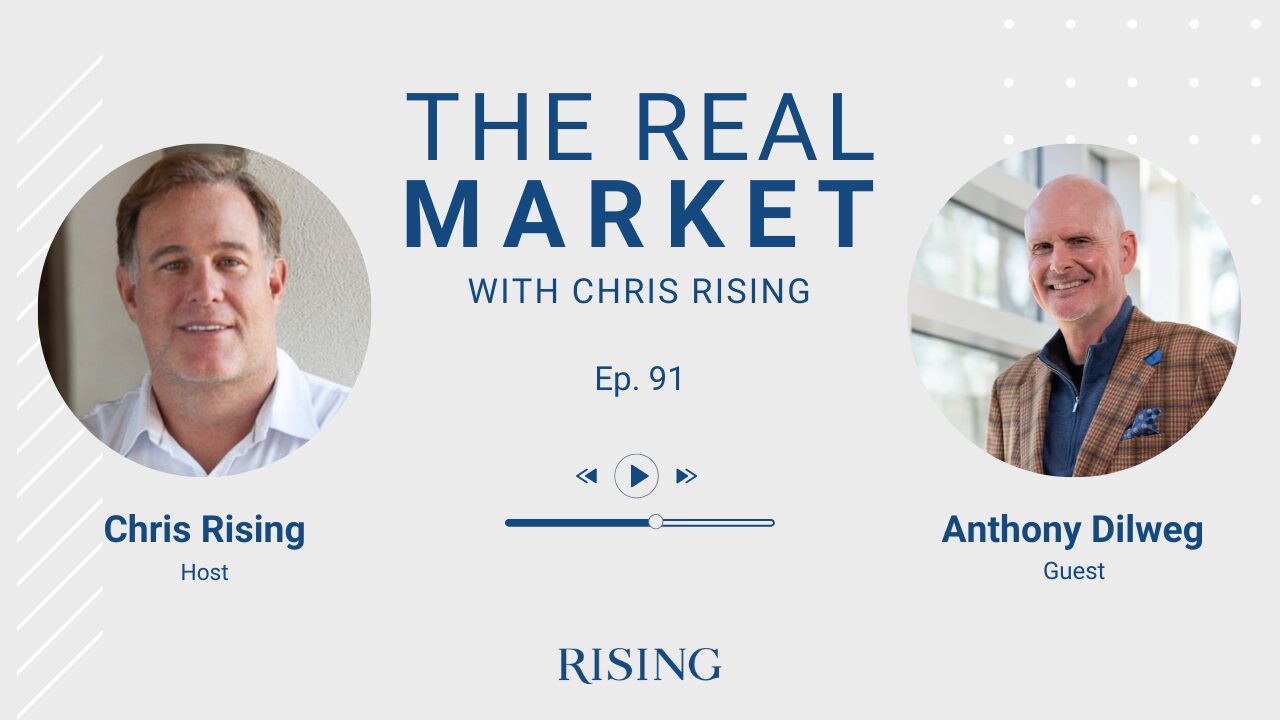
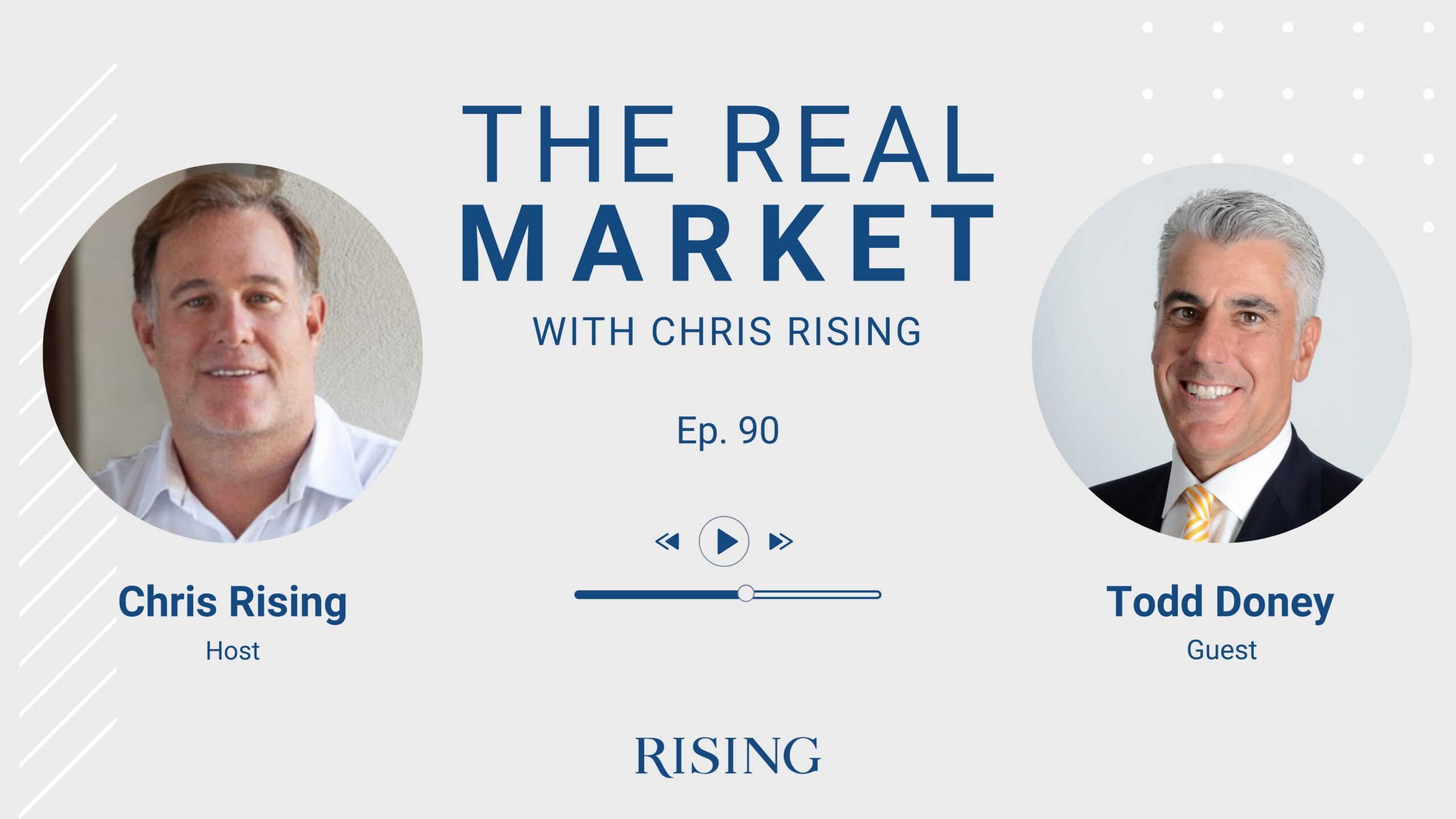
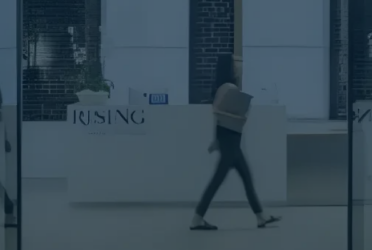
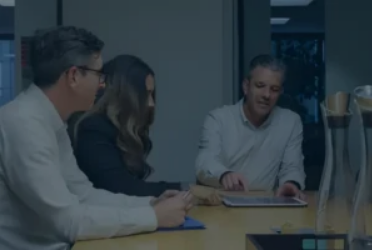
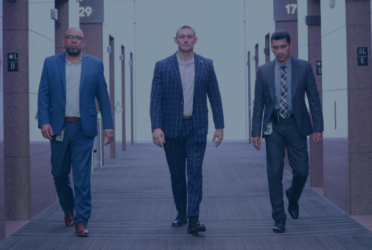
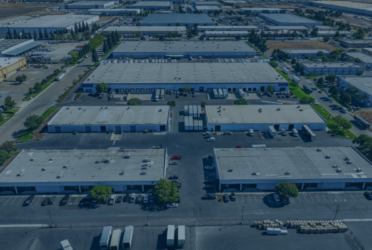
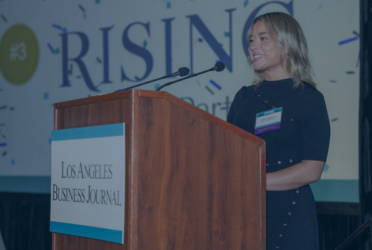
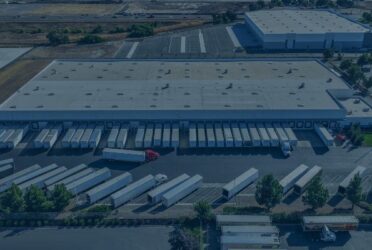
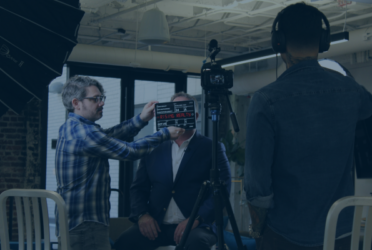
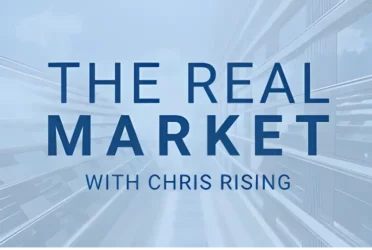 Podcast
Podcast